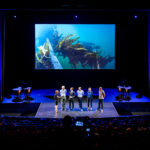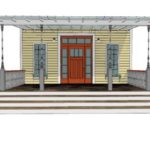When the subject of your conference is the natural environment, your timeline tends to relax. Take the World Parks Congress, which since 1962 has been organized by the International Union for Conservation of Nature (IUCN) every 10 years. What’s a decade-long meeting cycle when you’re dealing with something that’s 4 billion years old?
The idea of having this Congress every 10 years was, first, because it’s an adequate timeframe to assess progress.
“The idea of having this Congress every 10 years was, first, because it’s an adequate timeframe to assess progress,” Pedro Rosabal, deputy director of IUCN’s Global Protected Areas Program, said in a phone interview from the group’s headquarters in Switzerland. “Some of the things that we have to assess in relation to protected-areas management and conservation take a long time to be achieved…. It’s also an appropriate time for reflection on new trends and new threats to protected areas. You can really look into problems in a more realistic way. Anything that can be done in a shorter period of time doesn’t provide a good perspective of where we stand on things.”
The sixth World Parks Congress was held last Nov. 12–19 at Sydney Olympic Park, in Sydney, Australia. More than 6,000 people from more than 170 countries participated — all of them in some way involved in the planning, management, or governance of national parks, nature reserves, wilderness tracts, and other protected areas. Under the umbrella theme “Parks, People, Planet: Inspiring Solutions” and four “cross-cutting themes” (Marine, World Heritage, Capacity Development, and New Social Compact), the sprawling program included hundreds of sessions, high-level World Leaders’ Dialogues, pre- and post-Congress field trips to protected areas throughout Australia, and an expo hall organized around six pavilions: Ocean+, Protected Planet, Conservation Finance, Nature-Based Solutions, Business and Biodiversity, and WIN & Pacific Community Dialogue.
“In those pavilions, there were a lot of side events, informal discussions, and interactions with people,” Rosabal said. “That mechanism was a fantastic way to ensure the networking that is also associated with this Congress.”
And the “Inspiring Solutions” of the theme was more than just rhetoric. “Almost every challenge we face in the environmental movement — there are solutions for those challenges,” Rosabal said. “But people don’t use it sometimes because they don’t know it, so the core [of the program] was to look into, what are the innovative solutions out there that we can promote and replicate? We asked people to use those solutions in a more proactive way to inspire in particular the new generation [about] how to deal with protected-areas challenges.”
Solutions” of the theme was more than just rhetoric. “Almost every challenge we face in the environmental movement — there are solutions for those challenges,” Rosabal said. “But people don’t use it sometimes because they don’t know it, so the core [of the program] was to look into, what are the innovative solutions out there that we can promote and replicate? We asked people to use those solutions in a more proactive way to inspire in particular the new generation [about] how to deal with protected-areas challenges.”
Indeed, the Congress culminated with The Promise of Sydney, a comprehensive outcomes document that was curated throughout the program and presented at the closing plenary. “That gives a really inspired message for the people working in protected areas on what we need to do in the near future,” Rosabal said. “It’s a document that compiles the key discussions that happened in the Congress in a very practical way that can be used by all. It reflects where we want to be and how we want to get there.”
And in another decade, IUCN will see if it’s made good on that promise.



